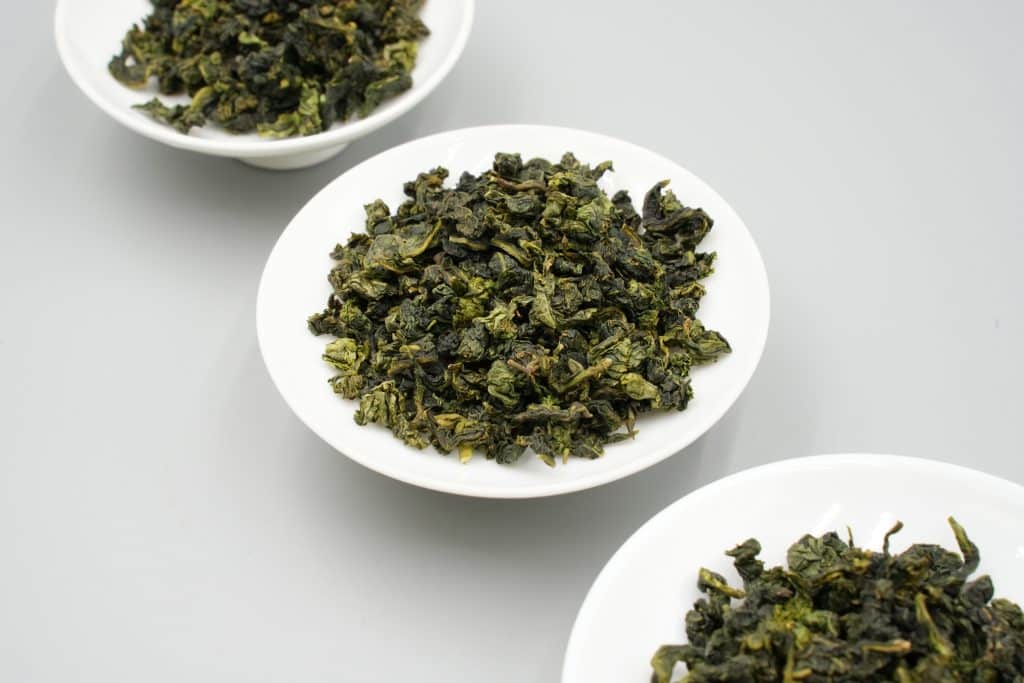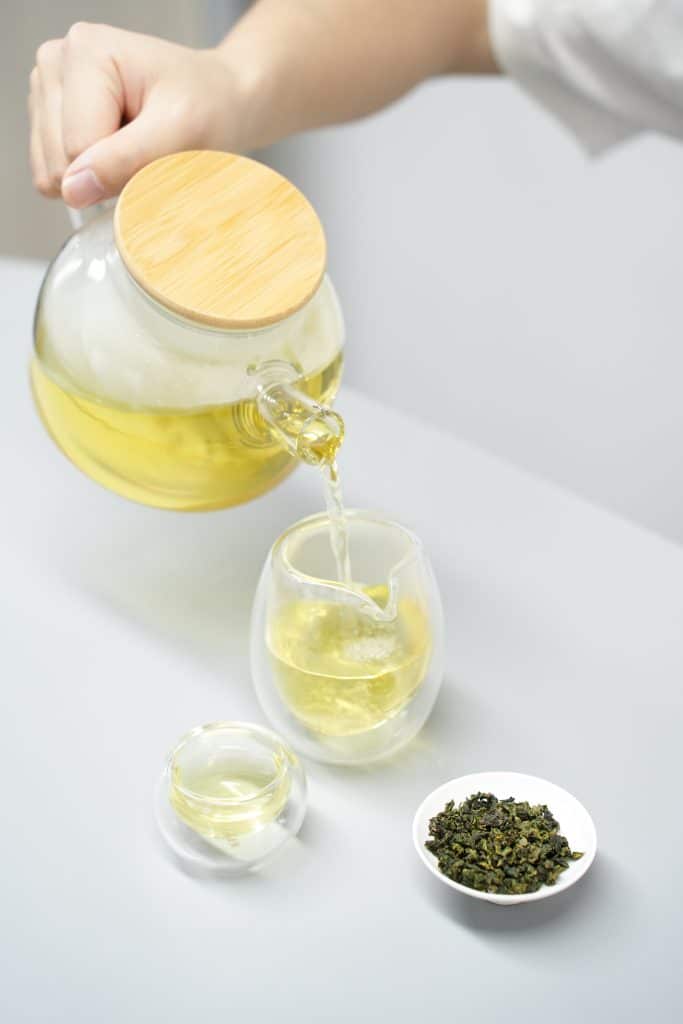Loose-leaf Oolong tea is both mysterious and unique. For those new to this kind of tea, there might be many questions. Let’s dive into these commonly asked questions:
1. Why is Oolong tea also referred to as “Green Tea”?

Oolong is a semi-fermented tea, which gives it a greenish-brown hue, hence the name. The leaves are green in the center with a red edge, poetically described as “green leaves with red trim.” Oolong combines the production strengths of both black and green teas, undergoing processes like “killing the green” and fermentation. Due to its mature, robust appearance, Oolong has been termed “Slimming Tea,” known for aiding digestion, promoting diuresis, and supporting weight loss. Moreover, Oolong has strong anti-allergic and anti-cancer health benefits.
2. Is less stem in Oolong tea better?
Contrary to what some might believe, less stem isn’t necessarily better for Oolong tea. In fact, the right amount of stem often indicates a good tea. Typically, the second and third leaves are picked for Oolong tea, a process called “Open Face Picking.” These leaves usually come with stems, which can enhance the richness during brewing. Additionally, well-preserved Oolong tea with stems may have a better aftertaste and more authentic aged aroma. Thus, the presence of stems shouldn’t be the sole criterion for evaluating Oolong tea’s quality; the actual flavor and aroma are also crucial.
3. Where is the homeland of Oolong tea?
Fujian, China, is the birthplace of Oolong tea, boasting varieties like Tieguanyin, Shuixian, Wuyi Rougui, Baozhong, and Huangjingui. Oolong is a hallmark tea of China, with main producing regions in Fujian, Guangdong, and Taiwan provinces. The processing technique of Oolong, integrating aspects of both black and green tea production, is among the most intricate in the tea world.
4. What distinguishes Oolong tea?
Oolong’s hallmark is its “green leaves with red trim.” It offers a rich aftertaste without the bitterness of green teas or the intensity of black teas. Instead, it harmoniously captures the freshness of green teas and the mellow sweetness of black teas. Oolong teas provide a unique “throat charm,” with Wuyi rock teas having a “rock essence” and Anxi’s Tieguanyin exuding a “musical charm.”
5. How is Oolong tea produced?
Oolong’s production is one of the most sophisticated among all tea types. Its fundamental processes include sun-withering, indoor wilting, tossing, pan-frying, initial rolling, final rolling, and drying. Each step, from sun-withering to indoor wilting, is meant to moderate moisture and facilitate optimal fermentation. The tossing process helps in shaping the signature appearance of Oolong and developing its unique aroma.
6. Why brew Oolong tea with boiling water?
Oolong tea, usually made from mature leaves, requires a greater quantity for brewing. Moreover, the aromatic compounds in Oolong need high temperatures to be fully released. Therefore, boiling water at 100℃ is ideal for brewing Oolong.
7. What’s the best teaware for brewing loose-leaf Oolong tea?
Yixing clay teapots or lidded porcelain cups are preferred for brewing loose leaf Oolong tea, as they help in capturing and preserving its aroma. The rich hue of Yixing teapots complements the aged aroma of Oolong.
8. Does Oolong tea come in various colors?
Indeed, depending on its origin and variety, Oolong’s color can range from a clear light yellow to a beautiful deep orange-red. The lighter the tea leaf color indicates less fermentation, resulting in a lighter infusion, while the darker hues signify more fermentation, producing a deeper infusion.
9. Any precautions while drinking Oolong?
Yes. It’s advisable not to drink Oolong on an empty stomach as it might cause discomfort. Also, avoid having it right before bedtime, as it could disrupt sleep. Lastly, refrain from drinking cold Oolong, as it might upset the stomach.
10. Where can I buy authentic Oolong tea?
https://iteaworld.com/ – iTeaWorld started selling Chinese tea in China in 2009 and only began offering it in other countries in 2022. They offer several of the most classic Chinese Oolong teas. For beginners, it’s recommended to start with their loose-leaf Oolong tea collection set.

